Exploring Camden Market’s Street Art
Louis Bayman takes a guided tour of some of Camden’s street art.
“It was activism that got me here. Too much of entertainment is a factory world. I attended protests and started to see placards as a willfully ignored form of art.”
It’s easy to walk past images. They stare at us from every shopfront, billboard, bus stop, and corner. Each one contains a message, and each one, for better or worse, forms the illustration to our everyday lives. I took a tour round Camden Market to find out about the way street art is changing the marketplace, and the other grassroots forms of art that accompany it.
My guide is the founder of the website The Real Art of Protest (TRAP), who continues to me: “I’m interested in what’s real. After setting the page up I started making street art happen. The key thing is that anyone can do it, but many street artists are just DIY. It’s a community. I grew up in Islington. I want to increase the quality of street art and you start where you live.”
TRAP came out of the expressivity that exists on the street, in particular on street protests. “I remember on the 2003 antiwar demo – I saw a guy with a hand-painted gold-framed placard with a drawstring and a light and when night fell you could still see his placard. I became so focused on street art that I set up The Real Art of Protest. TRAP grew massive, because it was just as Occupy Wall St happened and the Arab Spring. Austerity had kicked in, Greece and Spain were suffering, but I felt burnt out, I didn’t want to go to a public meeting any more or sell papers, I felt frustrated with apathy and with the left, which often patronises working class people. I wanted to focus on something achievable – the site celebrated placards, and aimed to be a sounding board for people to communicate their experiences.”
He takes me to Water Lane, where groups of tourists pose with street artist Dale Grimshaw as he works his way through his latest piece in his ‘Two Worlds’ theme. He tells me: “I like to combine images of remote or uncontacted tribes in Papua New Guinea or Africa, put into an urban setting, or superimposed with an image from Disney, to show Americanism meeting tribal life.”
“The idea behind Two Worlds is that we’re all on the same planet, so how do you judge quality of life just because we have a microwave and a job in the city? Who’s to say we’re enjoying ourselves with our McBurgers? I think we’ve gone too far with science and business. We’re ruining the world. We’re encroaching on these people’s natural habitats. The Huli tribe are getting fucked over by the Indonesian military, while loggers are taking their natural habitat.”
One of Dale’s pieces on Chalk Farm Road was painted over by an advertiser, another by a property owner. “I don’t like sucking up to the rich!” he tells me. “Growing up up north I used to read about punk. When I was about eight years old I saw ‘Stranglers’ written on a wall – this had a huge effect on me. I looked at album covers, at the Sex Pistols, along with more traditional art, like Constable. And in my work I combine both sides.”
“I left home as a teenager and I was put in assessment centre, then went to art school because they saw I had promise. I first started hearing about street art through punk, it was all anti-war and anarchist symbols, like a gun being snapped in half to form an A. A lot of paintings I used to do were personal, about my brother dying, my alcoholic violent father and council estate, about materialism. I’m especially well known for the eyes I paint, which have an emotional intensity and are not cartoony.”
An organised group comes to get their picture taken with him, and Dale is happy to oblige. After they leave he points out to me that “It’s weird, isn’t it, having tourists here? My more political side agrees with art outside, because in a gallery it doesn’t reach full society. I can chat to people for ages on the street about a piece of art, but they will not inside the gallery I’m stood next to.”
“It’s intimidating, and that’s the class system. Street art and Banksy have made art more accessible. It’s helped break down class stereotypes.”
TRAP’s founder agrees. “Banksy is the most famous street artist of all, and he’s anonymous, he rejects celebrity culture. He’s got great technique, brilliant political ideas, and humour. Those 3 elements make him a great street artist.”
“But there’s a gap – there aren’t many street artist who are also activists. There is not enough political street art. 80’s music and comedy kicked back against what was happening politically. I want big political statements in street art – quotes by Malcolm X or Trotsky or [Shelley’s poem] The Mask of Anarchy – ‘we are many, they are few.’ I’d like to put that on a massive wall.”
He takes me round some of the most notable images. Next to Dale’s piece is one by Nemo’s, which is Latin for nobody. He explains to me that “Italy has suffered from economic malaise. For me, it’s two pieces, with the image of a sick man trying to fix himself. It’s an allegory, because part of the artwork is made up of pieces of Il Sole 24 Ore, the Italian business paper.”
He then takes me to a piece by one of a number of female artists, Saki & Bitches. As he points out, “some might take issue with this, but it’s what a woman has chosen to do.”
He explains to me what slaps are, the smaller stickers that proliferate wherever street art is. A whole world of artwork exists, of paste-up artists, and of those making art wherever and out of whatever they can. “Ben Wilson in Islington will paint on discarded chewing gum, like his pieces outside Elthorne Road job centre in Archway. Yarn bombers knit round statues and trees.”
Some of the most topical pieces are from Studio FPLO, a Brazilian street artist. His piece Victory includes the inscription, in Portuguese, that ‘football is good but we also want education, security, health’. My guide reminds me of the recent protests before the Brazil World Cup: “The police went in and called it ‘pacifying the favelas’ – what the fuck was that? Killing people for a football contest.”
During my tour he tells me how he intends to influence the future of Camden Town. “They want to get back to Britpop when Camden was centre of the world. £500m investment in Camden – their goal is to get rid of market and traders and put in Lagerfeld, Top Shop. I said to the owners, we want 20-25 spaces devoted to street art.”
He has a particular vision of what he thinks this street art should do. “I was born in Camden. A lot of it is pretty pictures, but where is the drive? Since 1998, there have been 333 deaths in police custody and number of officers convicted is zero. The law is above the law.”
He draws inspiration from the way graffiti was born. “Graffiti started in Philadelphia, not New York. Watch the documentary Graffiti Wars, or Bombit. Its basis was in the ghettos, and there was an explosion of people writing.”
Here, too, he sees the potential for the streets we live in to become expressions of our lives, to become ours. “I remember Reclaim the Streets, when protesters shut off Camden High Street – that was real cultural jamming, as Naomi Klein would put it – you block off the streets and have a big party. A live piece of work that lives and dies in one day – an incredible event – a real happening – a political event – and fun.”

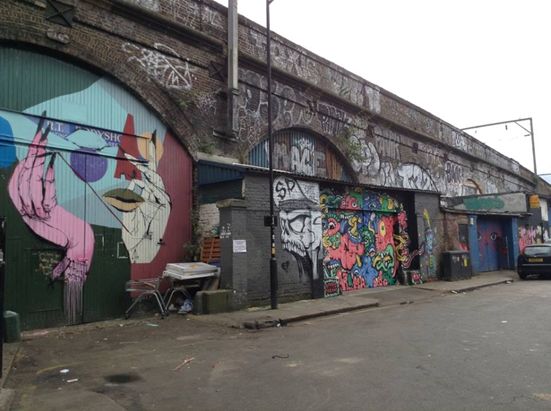
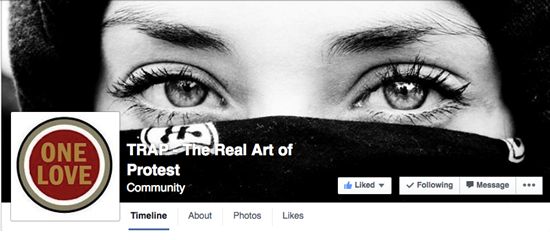
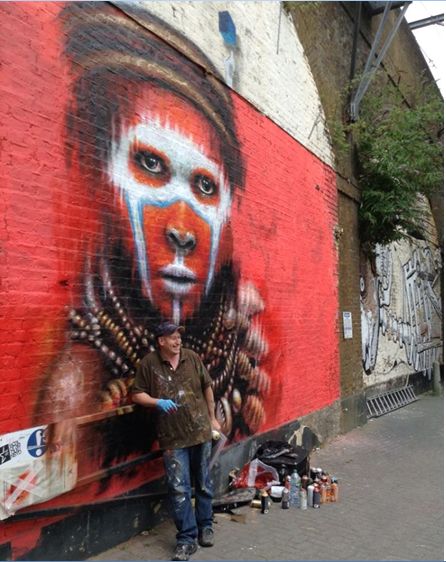
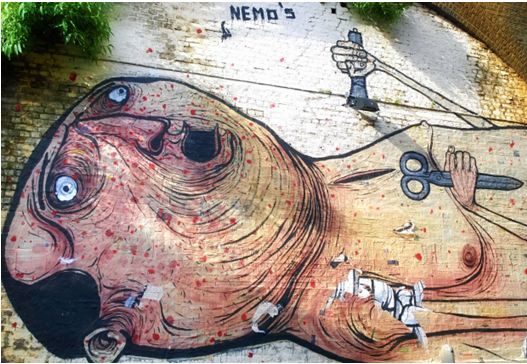
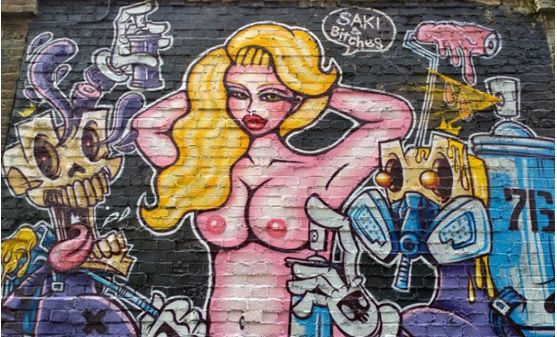
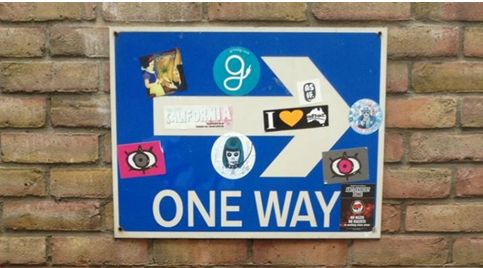
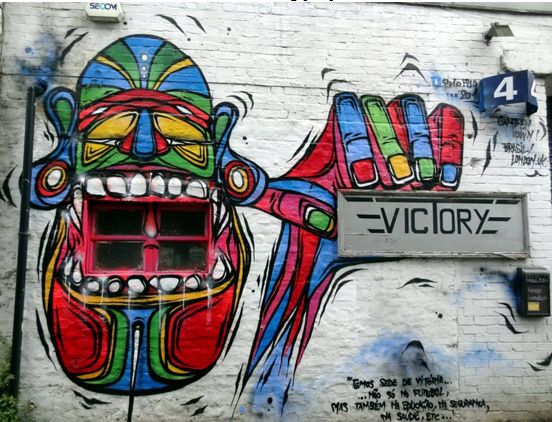
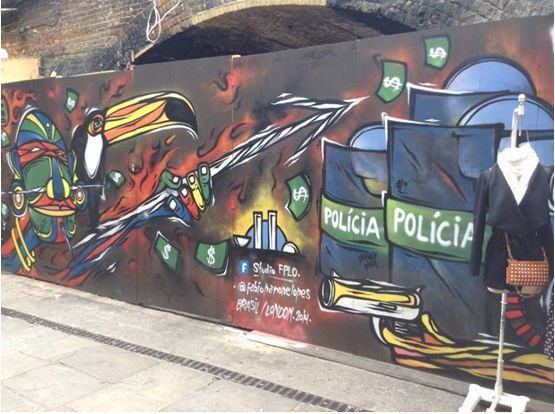
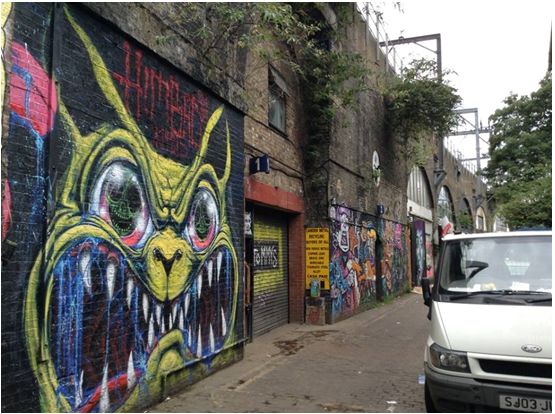

Join the discussion